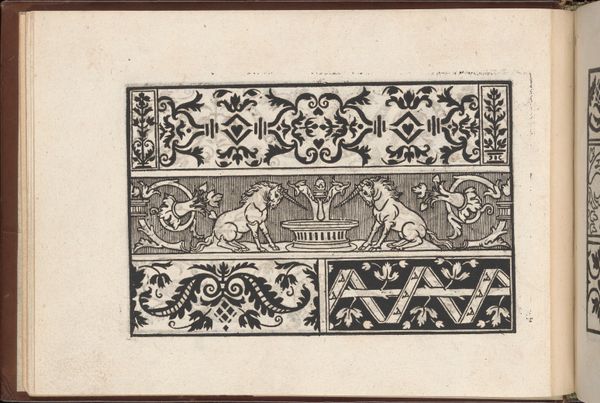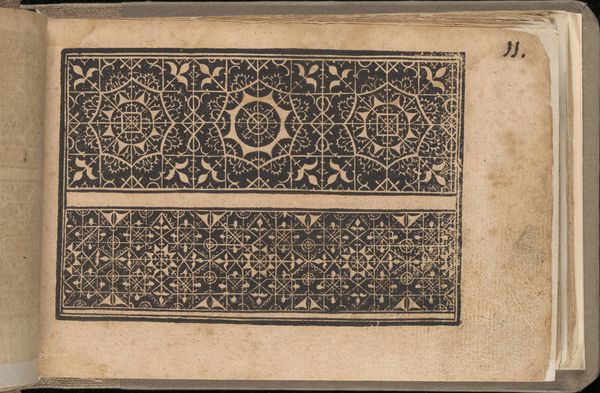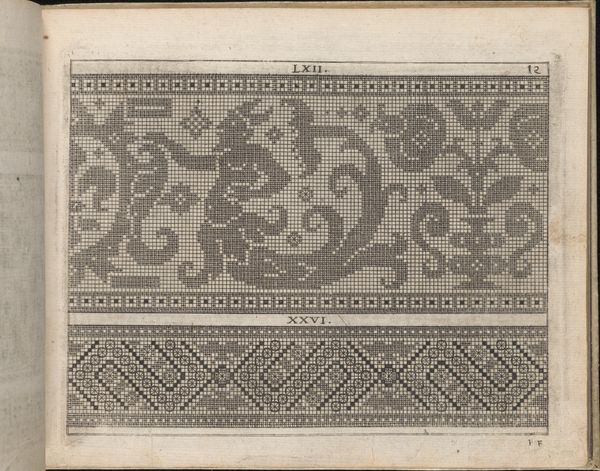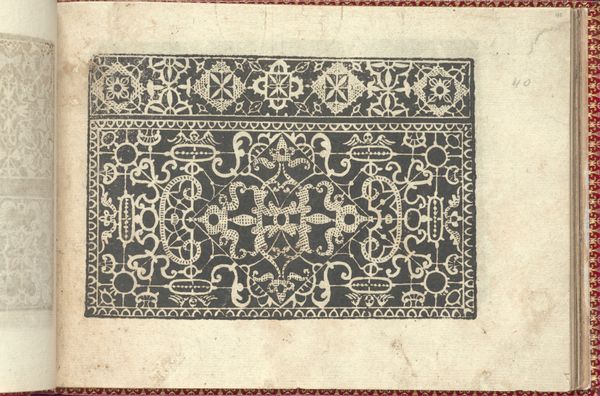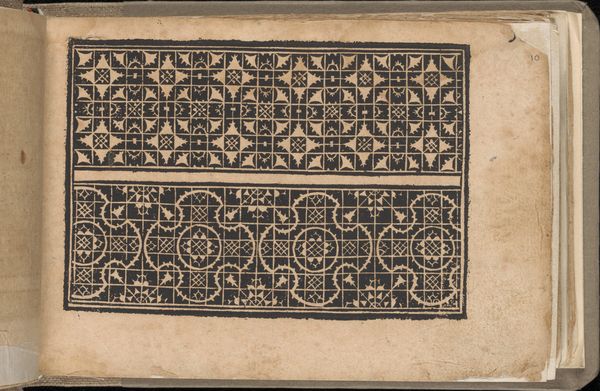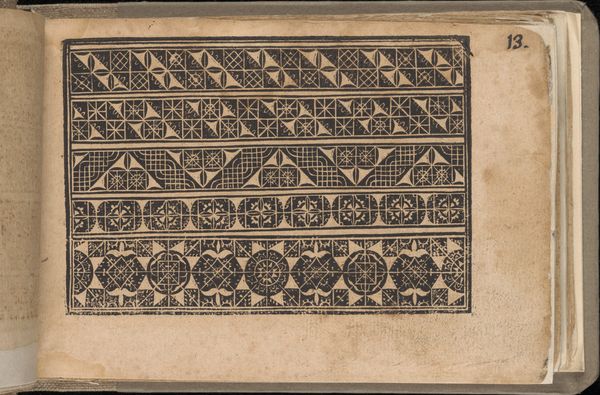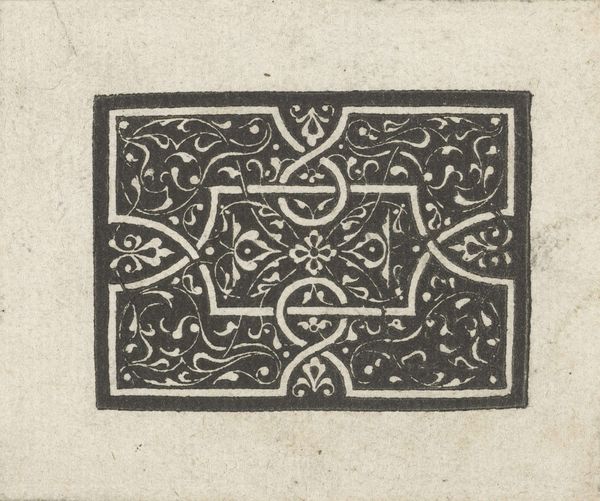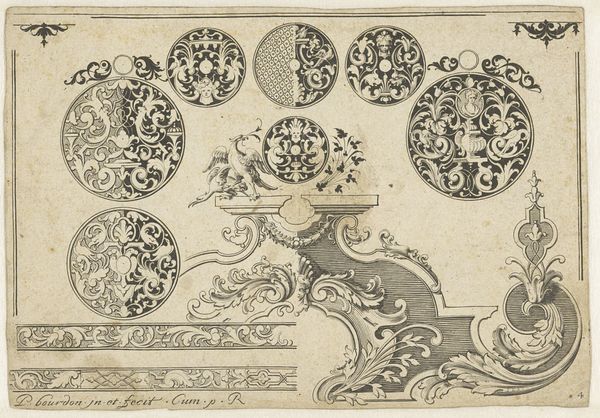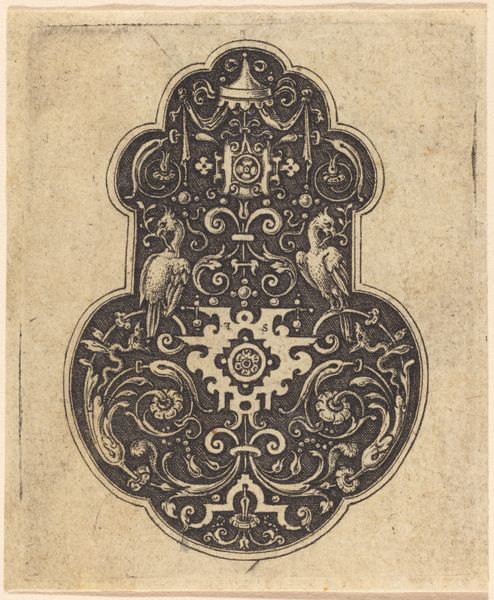
drawing, ornament, print, engraving
#
drawing
#
ornament
#
pen drawing
# print
#
geometric
#
line
#
northern-renaissance
#
decorative-art
#
engraving
Dimensions: Sheet: 2 13/16 × 4 3/8 in. (7.2 × 11.1 cm)
Copyright: Public Domain
This “Arabesque Design on Dark Ground” was made by Virgil Solis, probably in Germany, sometime in the mid-16th century. It’s an etching: that means the artist would have coated a metal plate with wax, scratched his design through it, and then bathed the plate in acid, which bit into the exposed metal. Look closely, and you can see the fine lines created by that process, and the way they gather to create areas of deep shadow. This was a relatively new technique at the time, and ideally suited to the creation of intricate, repeatable patterns like this one, which could be printed many times over. Solis was a prolific designer, and he made prints for all sorts of purposes: book illustrations, playing cards, even ornamental designs for swords. This particular arabesque may have been intended as a template for other artisans: goldsmiths, perhaps, or cabinetmakers. In any case, it shows how printmaking enabled the rapid circulation of design ideas – a phenomenon very much in keeping with the rise of early capitalism. It is a reminder that even apparently ‘minor’ works of art like this one were essential to the period's explosion of creativity and commerce.
Comments
No comments
Be the first to comment and join the conversation on the ultimate creative platform.
